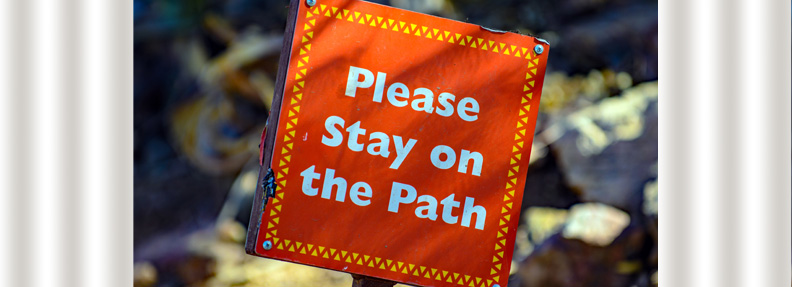
Photo by frank mckenna on Unsplash
Many aspiring authors I talk to think that traditional publishing, where you sell your book to a publishing house, is the ultimate in book publishing options. While publishing brands like HarperCollins or Random House do maintain a prestige factor, today there are many more book publishing choices, offering a wider range of services than ever.
The objective of this post is not to make an argument for or against any particular publishing option. First, I don’t think there is a definitive “right” choice. Instead, I want to provide information about the choices you have. And second, to make your best decision, you need to know the differences among publishing options and assess where you are on the author spectrum, in terms of skill and audience.
First, a few questions to ask yourself
- Am I a first-time author?
- What is my writing skill level? (with third party input from an expert or experienced writer)
- Do I want to sell a lot of books or do I just want to get my book in print?
- Am I already well-known as an expert on my subject aside from my writing?
- Do I have a website or blog related to my book topic with a large, engaged following (thousands) already?
- How much control do I want over the editing and look of the final book?
- Do I have one book in me or can I write an ongoing series of at least three titles?
- Do I want complete responsibility and control in marketing my book?
- How much do I want to spend on publishing and marketing my book?
- Am I willing to hire an agent and pay them to pitch my manuscript?
- Is it important for my book to get out to the market now, because of the timeliness of the topic?
- Do I want to earn a higher percentage of each sale or am I happy with a smaller cut to take a shot at bigger sales volume?
Traditional: Be sure you really understand how these publishers work
The idealistic view of being signed by a traditional – or full-service – publisher can seem like every writer’s dream. Your book proposal or manuscript is accepted and a multi-thousand-dollar advance follows. Professional editors and book designers then work with you to polish your book for sale. Soon you might be on a book tour, visiting shops and media outlets to talk about your story and prime the pump for release. With the publisher’s marketing and distribution clout behind you, sales rev up and royalty checks soon follow.
Authors report that the reality is quite different. The speakers I’ve heard in the business-of-writing group I attend really discourage all but a very select few from trying to sell their work through traditional publishers. They also point out that publishing industry trends are stacked against new authors, especially with publishing industry consolidation and declining employment. Book publisher employment declined by about 20,000 from 2009 to 2015 (Statista). That means pressure on the bottom line and less time for everyone still working in publishing to read and find new authors.
If you still think a traditional publishing house might be right for you, here are some key things to know:
- Examples: The “big five” of HarperCollins, Hachette, Macmillan, Penguin Random House, and Simon and Schuster
- Need to retain and pay an agent with good connections to pitch and sell your book to the publisher
- Good choice if you have a strong author brand, and existing readership or fan base (what they call the “author platform”), rather than your talent or the quality of your story
- Active social media following
- In-demand as a speaker
- Online audience built with website
- Some prestige factor and easier access to reviews
- Focus is finding mainstream blockbusters, not niche topics or audiences that don’t pencil out for them
- Covers upfront cost of publishing
- Distributions to all mainstream stores and ordering channels
- If it doesn’t sell, returns come back or sold at heavy discount
- Long lead-time: Typically 9-12 months to get it into print
- They will help some with marketing, but still need effort by author
- Part of what they buy is control of the finished work
- They edit and produce final manuscript
- They choose cover art
- Advance is only that, and must be earned back from royalties before you earn more
- Pay you royalties – typical is about $1 per book
- Alan Jacobson, bestselling author with 9 novels, says typical paperback: 8% of retail price on the first 150,000 copies sold, then 10% thereafter.
- Some agreements require that you purchase a set number of copies at wholesale (approx. 50% of retail price)
- If you go this route, get help from publishing experts to help you negotiate and finalize the terms of your deal.
For more insight from an author who opted out of full-service publishing, read “Why I Left Traditional Publishing in Favor of Self-Publishing” by Stephanie Chandler. Ms. Chandler opted for a hybrid publisher, IngramSpark.
Hybrid: A growing number of companies provide new options
Several new book publishing options have popped up in the past few years that offer a lot of help and automation when it comes to publishing your book. According to the Independent Book Publishers Association: “Under the hybrid business model, authors help subsidize the publication of their book while the publisher is responsible for producing, distributing, and ultimately selling professional-quality books.” (See link below to news of IBPA setting standards for hybrid publishers.)
In addition to a low, entry-level price, these services typically offer an ala carte menu of add-ons like editing, book store distribution, catalog availability, and promotional services. It will cost more than doing it all yourself, but can be well worth the time and effort saved on your part when you want help, rather than having to navigate the process on your own.
- Examples: IngramSpark, FastPencil
- Inexpensive way to gain distribution channels – IngramSpark $49 for e-book and print on-demand (POD)
- Data feed to partners and Ingram catalog
- Ordering channel for 39,000 retailers worldwide – hardcopy
- Online to 80 e-book outlets
- Retailers, libraries prefer this way to purchase
- Higher percentage royalties than traditional, but lower than self-publishing
- Print-on-Demand (paperback or hardcover) – no inventory, no warehousing, easy updates
- Quick turnaround from submission to in-print (days)
- You do your own marketing
- Better for niche audiences that don’t make sense for traditional publishers
- Test the marketplace, then print later if demand develops
- Easy to experiment with pricing
- You supply full PDF for print; EPUB file & JPG cover for e-book
- Get paid when partner orders books (list price minus 30% discount minus print fee)
Independent: The do-it-yourself choice
The good news: this option is available to anyone with a willingness to dive in and learn how to format their manuscript and upload it (and that’s getting easier all the time). The bad news: pretty much the same thing.
Everyone can publish on their own at virtually no cost, so the term “self-publishing” is now equated with low quality. As a result, you’ll face a credibility problem even before the first page is read.
That problem is why “indie publishing” has supplanted “self-publishing” as the preferred industry term among more serious authors. I read one article that explained the change with a comparison to the music industry, where “indie artist” is used, not “self-produced.”
An indie author is what you want to be, not self-published, which lumps you in with vanity publishers (think garage full of boxed books) and other routes authors take when no other alternatives are available.
But the issue of generally poor quality also represents an opportunity for you. If you put in a little extra effort to bring your book up to professional standards, you can separate yourself among the 800,000 (and growing) independently-published books annually.
To help you, the IBPA has produced an “Industry Standards Checklist for a Professionally Published Book.” Follow it, and then when you submit your book for reviews or online, make sure people know you have. IBPA provides industry standards “seal” artwork to put on your website or promotional material for that purpose.
Also, industry icons like Publishers Weekly used to ignore “self-published” titles entirely, but now are changing their outlook as the indie author tidal wave washes over the industry. Booklife by Publishers Weekly is a dedicated website and section in the magazine focused on promoting indie authors. Basic listings are free, but Booklife also offers affordable paid opportunities to attract reviews and promote your book.
Key points to consider for indie publishing:
- Example: Kindle Direct (KDP), Draft2Digital or Smashwords
- Lowest cost option
- Just time and effort of properly formatting and uploading
- Quick turnaround from submission to in-print (days)
- Formatting for submission is getting easier with apps like Kindle Create
- Success requires being entrepreneurial and running your “writing business”
- You do your own marketing
- Set your prices and get major portion of royalty, paid directly to you
- Print-on-Demand (paperback or hardcover) – no inventory, no warehousing, easy updates
- Test the marketplace, then print later if demand develops
- Easy to experiment with pricing, offer deals
- No easy access to distribution channels
*Update 5/2/18: KDP (formerly CreateSpace) no longer provides author services like editing, book design, and marketing (Read more here: Amazon Now Out of Author Services)
Traditional publishers’ role as the gatekeepers of the industry is diminishing by the day. You have more good book publishing options than ever before. Prior to making your choice, be realistic about your book, where it fits in the market, and your status as an author on the scale from beginning to well-known. Then also be realistic about your skills in writing, editing, formatting, and marketing. Get help where you need it and you’ll be further along in your quest to share your story and ideas with the world.
A few links to more information on this topic:


